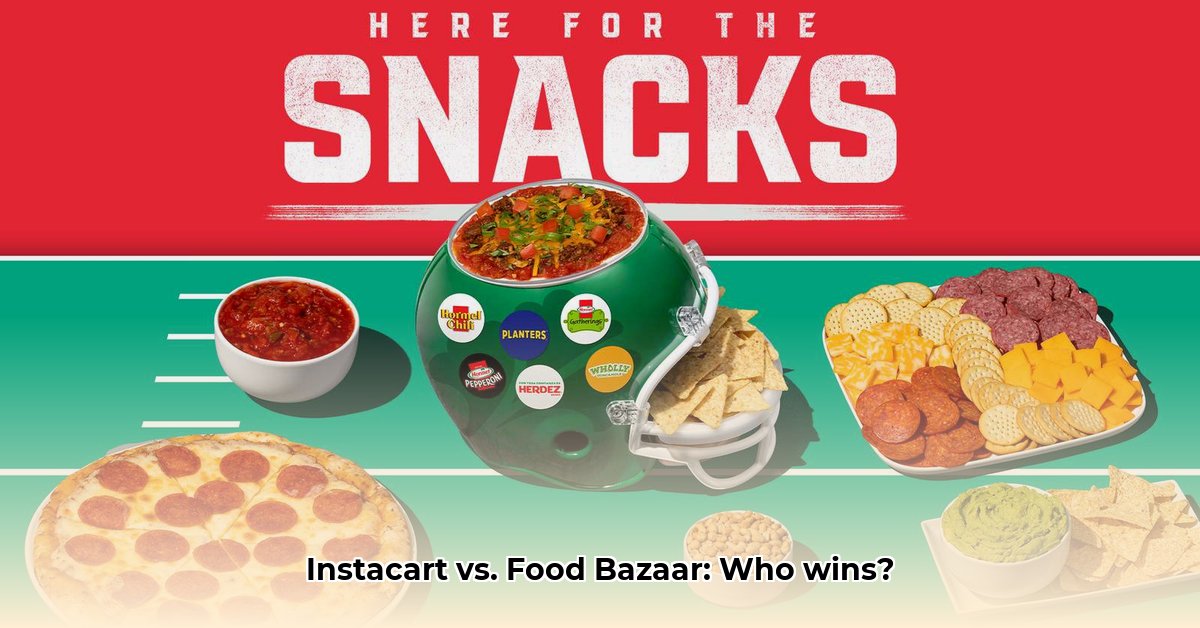
The online grocery delivery market is fiercely competitive, a high-stakes race where Instacart and numerous competitors vie for dominance. This article examines Instacart's partnership with Food Bazaar, analyzing their strategic positioning and the challenges they face in this rapidly evolving landscape. Success hinges on more than just speed and convenience; it requires a multifaceted approach that addresses efficiency, customer satisfaction, and long-term sustainability.
Instacart and Food Bazaar: Navigating the Challenges
Instacart and Food Bazaar face considerable hurdles. The reliance on independent shoppers introduces potential inconsistencies in service, requiring constant monitoring of quality and accuracy. Maintaining customer satisfaction while controlling costs presents a significant operational challenge. However, these challenges are balanced by significant opportunities for growth and market share expansion.
A Winning Strategy: Beyond Delivery
To thrive, Instacart and Food Bazaar must adopt a multi-pronged strategy:
Enhance Shopper Experience: Investing in comprehensive training and support for shoppers directly improves customer satisfaction. Improved shopper performance translates into quicker, more accurate deliveries and enhanced customer loyalty.
Strategic Pricing: Achieving the optimal balance between competitive grocery pricing and profitable delivery fees requires data-driven analysis. This involves identifying the price point that maximizes customer acquisition while ensuring business profitability.
Optimize Delivery Efficiency: Streamlining the delivery process through route optimization, improved warehouse organization, and technological advancements is crucial. This translates to faster delivery speeds and efficient resource allocation.
Cultivate Customer Loyalty: Implementing personalized offers and reward programs fosters repeat business and builds brand loyalty. Targeted promotions and exclusive benefits incentivize customer retention.
Strategic Partnerships: Collaborations with other businesses expand reach and market penetration. These partnerships can unlock new customer segments and enhance brand visibility.
Embrace Technological Advancements: Investing in advanced technologies, such as AI-powered route optimization and automated inventory management, provides a competitive edge. This includes exploring innovative solutions for increased efficiency and accuracy.
Stakeholder Perspectives: Short-Term and Long-Term Goals
Different stakeholders view the partnership's success through different lenses:
| Stakeholder | Short-Term Priorities (0-1 year) | Long-Term Priorities (3-5 years) |
|---|---|---|
| Instacart Food Bazaar | Improve shopper training; optimize pricing & deliveries; enhance customer service | Invest in automation; expand market reach; implement robust loyalty programs; explore vertical integration; enhance brand awareness |
| Customers | Fast, reliable delivery; affordable prices; convenient ordering | Personalized offers; increased transparency; diverse delivery options |
| Investors | Demonstrate profitability; increase market share; ensure efficient operations | Seek consolidation opportunities; prioritize long-term sustainability; monitor competitor activity |
Adapting to a Dynamic Market
The online grocery delivery market is volatile. Instacart and Food Bazaar must demonstrate agility in responding to regulatory changes, technological advancements, and evolving consumer preferences. While the future is uncertain, effective adaptation and innovation will be crucial for long-term success.
Improving Grocery Delivery Efficiency for Small Businesses: Key Considerations
The online grocery boom presents opportunities for small businesses, but success requires strategic technology implementation. Data-driven decisions, targeted marketing, and strategic partnerships are crucial.
Key Takeaways:
- Leverage Technology Wisely: Choosing the right technology tools, such as user-friendly POS systems and streamlined delivery management software, is essential for efficient operations.
- Strategic Partnerships: Collaborations with local delivery services or ride-sharing apps offer cost-effective delivery solutions.
- Data-Driven Growth: Tracking key metrics (order volume, delivery times, customer satisfaction) informs strategic adjustments and maximizes profitability.
The online grocery sector is a dynamic environment demanding adaptation and innovation. Instacart and Food Bazaar’s success will depend on their ability to implement a well-rounded strategy that incorporates technological advancements, customer-centric practices, and strategic planning. The coming years will be critical in determining their ultimate position within this fiercely competitive landscape.